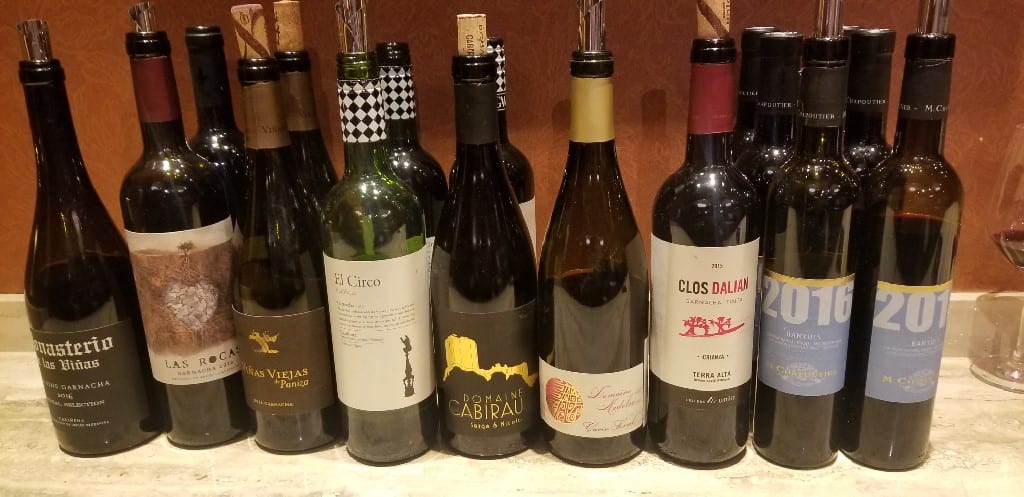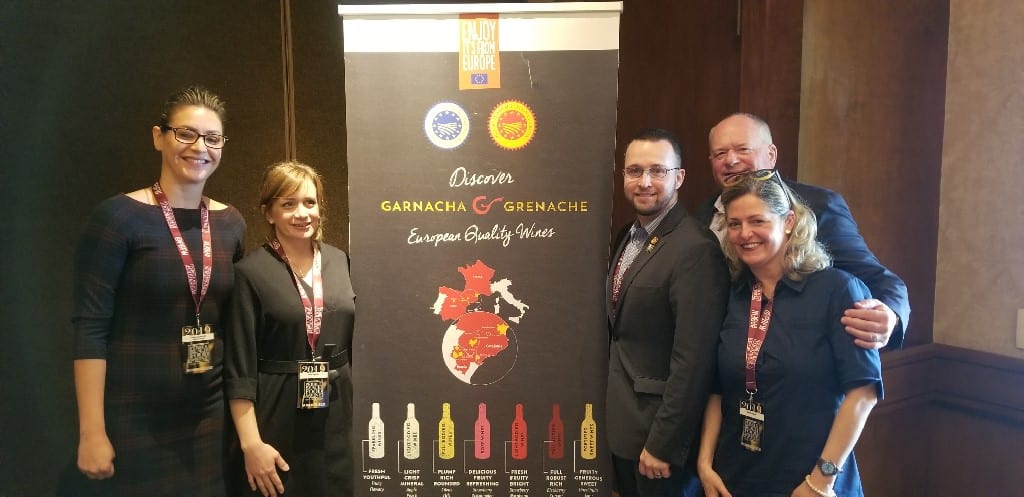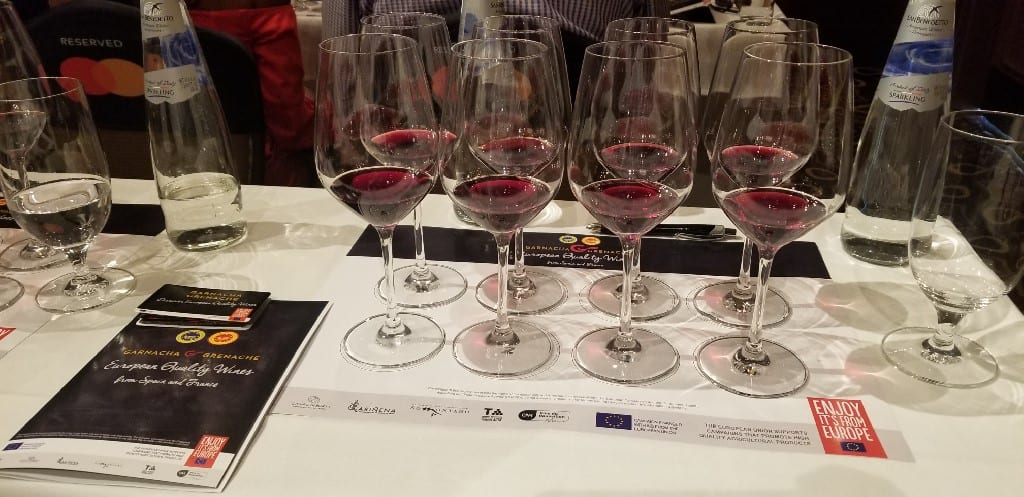

08 Oct Garnacha and Grenache Take Center Stage
Earlier this year, I attended a seminar at Pebble Beach Food and Wine entitled Discover Garnacha & Grenache. The world’s seventh-most planted grape, it is produced in Spain and France, as well as many other wine regions around the world. In celebration of International Grenache Day on Friday, September 20th, my story ran in the Napa Valley Register and now I am sharing it here.

Let’s agree to both and beyond!
Whether you call it Grenache or Garnacha, it is the world’s seventh-most planted grape.
With almost 500,000 acres planted around the world, Grenache/Garnacha originated in Aragón in northeastern Spain. Today, it can be found in France, Spain, Italy, Australia, the United States, South Africa, as well as Tunisia and Algeria.
Grenache/Garnacha is a variety that reflects terroir. It flourishes in hot and dry climates and is resistant to wind and thrives in poor soils. It is a grape that has an extraordinary range of flavor, personality and price.
Grenache/Garnacha can also produced in a broad range of styles, from light-bodied and full-bodied white wines to rosé to light-bodied and full-bodied reds to sparkling wines and fortified wines.
No matter the style of wine, Grenache/Garnacha produces expressive but balanced wines. Typical characteristics include strawberry, black cherry, raspberry, tobacco, anise and cinnamon. But few varietal wines have the name Grenache on the label. Some of the greatest wines in the world, from Châteauneuf-du-Pape in France to Priorat in Spain, traditionally use Grenache/Garnacha in blends.
But a new generation of winemakers in eastern Spain and in Roussillon France are crafting wines in which Garnacha/Grenache plays the starring role. As part of a program with the European Union to maintain quality, six PDOs (Protected Designation of Origin): Campo de Borja, Cariñena, Calatayud, Somontano, Terra Alta and Roussillon, carry a guarantee of their provenance and quality. Each PDO produces wines that share common traits but are unique to their region. And best of all, the cost of the wines is affordable.


— Cariñena: Established in 1933, Cariñena is the oldest town in the region of Aragon. It is located almost equidistant between Madrid and Barcelona. The area is dry and arid with elevations of 400-800 meters high. The climate is continental with cold winters and hot summers. The soils include miocene clay, brownish limestone, and rocky subsoils.
Grandes Vinos y Viñedos, DO Cariñena, Monasterio de la Viñas Old Vine Garnacha 2016 Red ($15)—Soft berry fruit, morello cherry and almost sweet like confectioner sugar on the nose. More savory character on palate. Lovely weight and elegance with acidity that dances on the tongue and drying tannins.
Bodeas Paniza, DO Cariñena, Viñas Viejas de PAniza Garnacha 2016 Red ($12)—Delicate red fruit nose of strawberry and raspberry with white pepper and spice. On the palate, light body and easy drinking.
Grandes Vinos y Viñedos, DO Cariñena, El Circo Acróbata, Garnacha 2015 Red ($13)—Most concentrated color, the wine is fruity and friendly with strawberry and raspberry notes. Not a complicated wine but easy to drink with medium acid and medium tannins.
Established as a DO in 1989, Calatayud is the third most producing Garnacha region in Spain. It is located on the western side of Aragon. The continental climate is dry and arid with significant diurnal shifts. Diverse soils include grey and red slate, limestone, clay, loam and pebbles.
Bodegas San Alehandro DO Calatayud, Las Rocas Viñas Viejas, 2016 Red ($19) – Softer than the first wine, the berry aromas are more pronounced and intense and the tannins are sandy.
Established in 1972, Terra Alta has a continental climate with a Mediterranean influence. The region has abundant sunshine and is where two winds, a cold wind from the north and a humid wind from the south, converge. The soils are limestone and clay.
Cellers Unió Do Terra Alta, Clos Dalian, Garnacha Crianza 2015, Red ($12)—Dark intense red fruit jam with a sweet lift, herbaceous, mineral note on finish.
Established in 1977, Campo de Borja is in the northwest of Aragon. Vines are found in three distinct zones, defined by altitude. The continental climate is extreme with cold winters and long hot summers and very little rain. Soils are sand over limestone and stones.
— SomontanoEstablished in 1984, Somontano means “at the foot of the mountain.” Located between the Ebro River and the Pyrenees mountains, Somontano has extreme heat and drought in the summers with diurnal shifts. The soils are sandstone and red clay.


Twenty miles north of Spain, across the Pyrenees mountains is Roussillon. Once an independent kingdom, Roussillon is a huge zone that borders the Mediterranean Sea to the Spanish border. Soils are diverse and include limestone, clay, shale and granite. The climate is very hot and dry. Roussillon is home to 14 PDOs and is known more for its fortified wines.
M. Chapoutier, AOP Banyuls, 2016, Red-Fortified (Vin Doux Natural) ($25) — Made from 100 percent Grenache from 18- to 20-year-old vines, the wine has powerful aromas of black and red stewed fruits, as well as a hint of cocoa. On the palate, it has finesse and the acidity balances the sweetness.
Read the original story in the Napa Valley Register.Discover more from Please The Palate
Subscribe to get the latest posts sent to your email.


